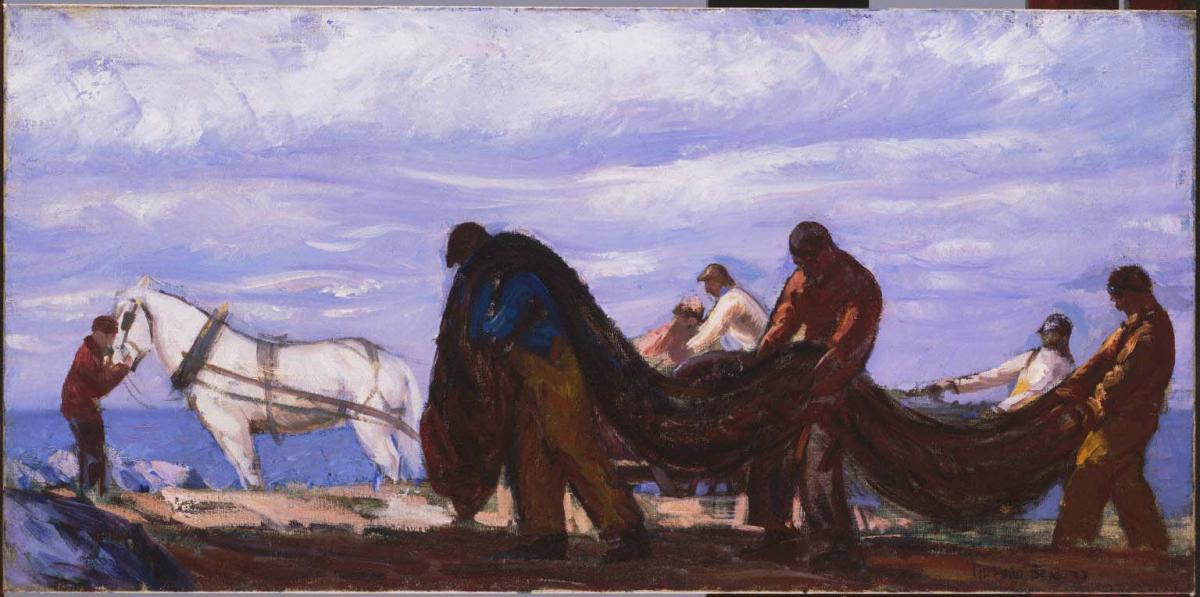Carrying the Nets
Gifford Beal ( 1923 )

Gifford Beal first began traveling around New England in the summer of 1920, where he was exposed to the area’s hard-working inhabitants whose livelihood depended on the sea. This new experience inspired him to concentrate on subjects exemplified in Carrying the Nets. Monumentality of composition, boldness of touch, and muted earth tones—inspired by his friends Rockwell Kent and George Bellows—replaced the staccato, textured brushstrokes, and bright color of his earlier style, more reminiscent of the impressionists.
Carrying the Nets is representative of Beal’s early treatment of the seafaring theme. The artist observed the scene from a detached point of view; like actors on a stage, the fishermen bearing their load occupy a shallow space. In the classical ordering of the figures, which are linked by the undulating mass of the nets, Beal achieved what has been described as “supple rhythm … animated by a common impulse.” In the early 1920s, Duncan Phillips recognized this quality in one of several essays for a publication on contemporary American artists: “Lately [Gifford Beal] has been painting the sea and the life and work of fishing villages and he has passed at times from a romantic to a classic point of view… . We admire his fishermen toiling in rhythmic unison.” Carrying the Nets recalls two paintings in the collection by Kent: Burial of a Young Man, c. 1908–11, and The Road Roller, 1909. Phillips’s own aesthetic was to find common threads between his paintings, whether or not those artists were intentionally referencing one another. Certainly Phillips saw such a connection between Beal and Kent, as he often hung Carrying the Nets next to The Road Roller.